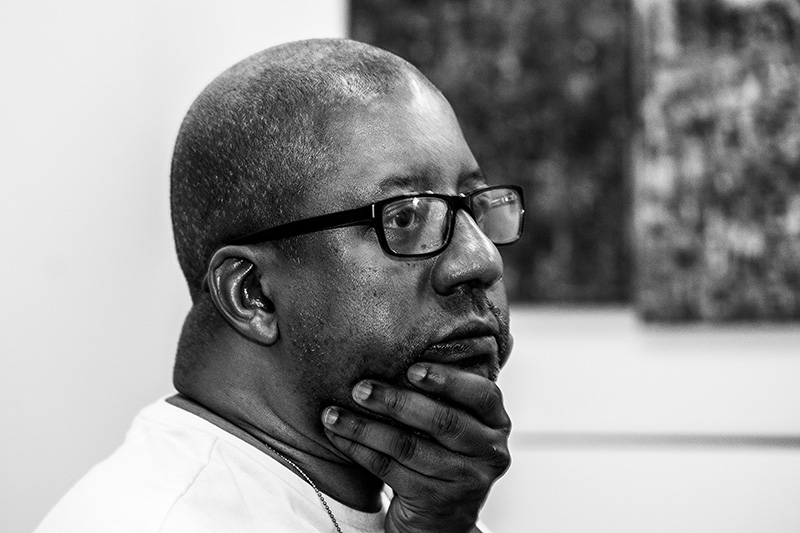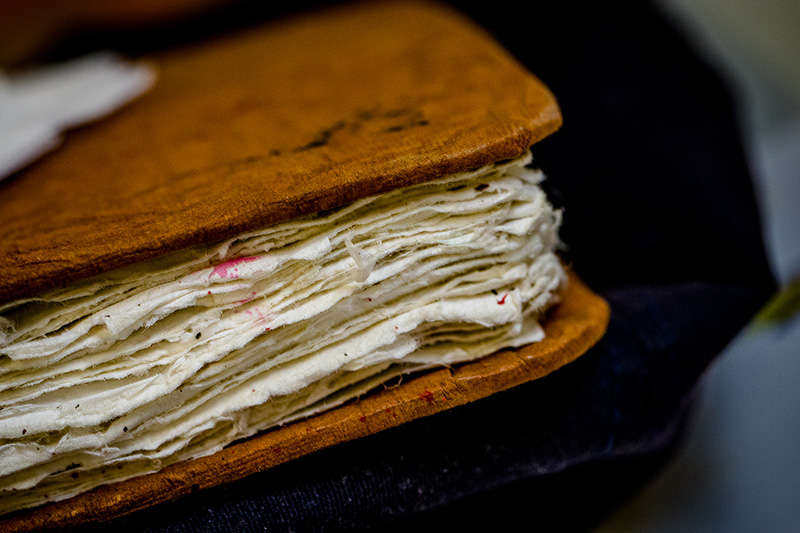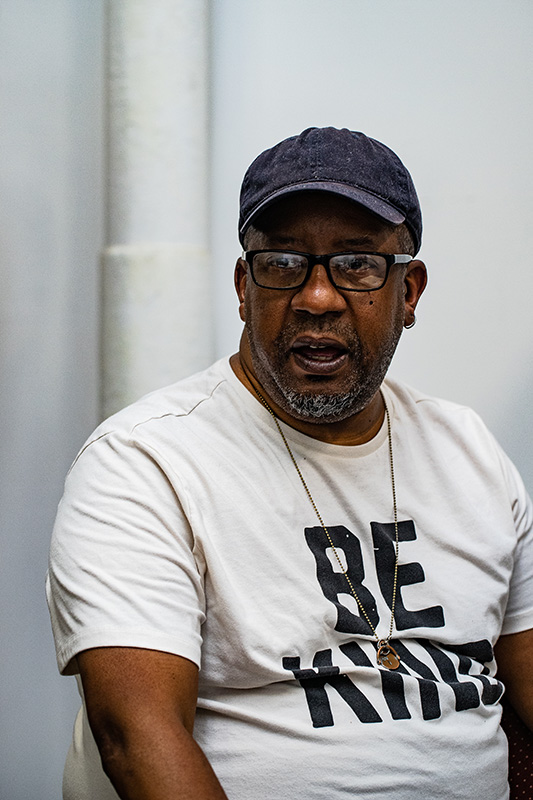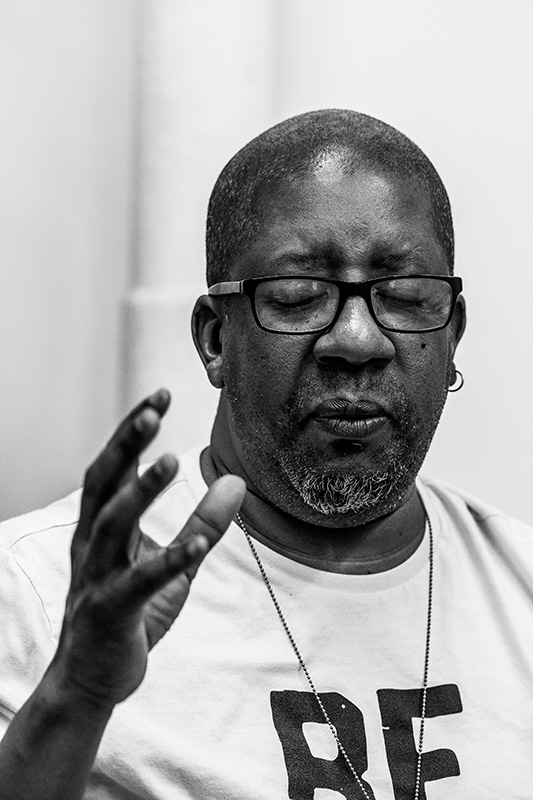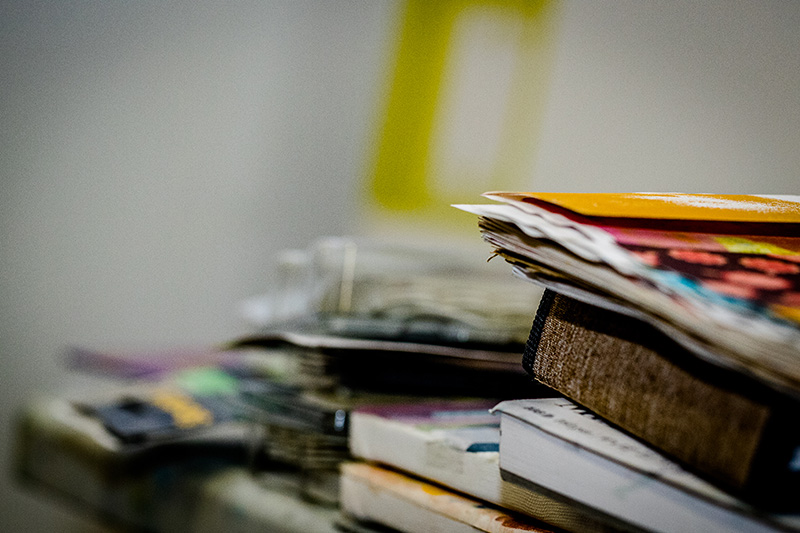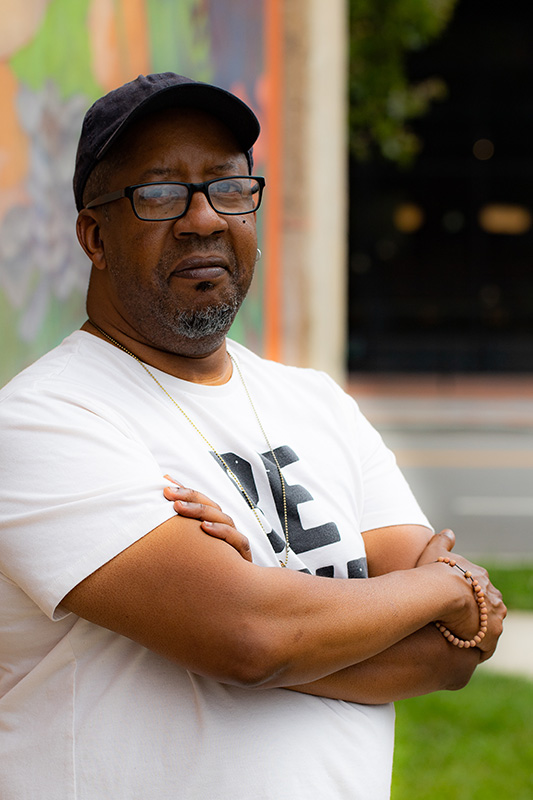Welcome to the world of autodidactic mixed media artist Marcus Blackwell. He cannot tell you how long artistic expression has been a part of his life, since it is imbedded in some of his earliest memories. He recalls as a boy learning from his father how to draw profiles; in fact, drawing has always been a strong suit for him, one that he has fallen back on throughout his life. I probably first met Marcus at the Vanderelli Room, sometime in 2017 or 2018, during a period in which he was actually not producing much work. A.J. will make another appearance later in this story. We had a funny moment during the beginning of the interview as I explained to Marcus that I wouldn’t be too close to him, since I was shooting with a 100mm lens. “Oh,” he replied, “I guess I could be over at A.J.’s place then.”
It all changed with a lady in red.
Marcus was having a show in a bank, and a patron wanted to purchase a digital work. It turns out, if it was a female figure wearing red, he wanted it.
“Is it an original,” the patron inquired. Marcus has to go into the explanation of what is involved in creating digital art. What it came down to with the patron was that he wanted to know if he was purchasing a “one of a kind.” Marcus explained that he could indeed reproduce the image if he wanted, but had no intention of doing so. The patron was satisfied, and Marcus made a sale. It turns out that it actually ended up being one of a kind because Marcus lost the digital file! More importantly, though, it started Marcus on a journey down a road that would later help him better understand the roles of criticism, opinion, and commerce as artist interacts with their audience: THE PUBLIC.
Marcus and his sister Allyson have an interesting relationship.
Marcus’ fortieth birthday ended up being a pivotal event in his life. Up until this point, Marcus had pretty much abandoned creating art, and was having a family and working for a large bank. Evidently his family and friends had not forgotten about his gift, though, because each one of them who came to his surprise party (thanks to Allyson stealing Marcus’ email list), brought an art-related gift. At about that same time, he had begun to discover (or rediscover, maybe), that he no longer needed to feel shame about leaving a formal art education, that he had the necessary tools to move forward, and that indeed, he did have something to say.
When Marcus and I started talking about being an autodidactic artist, he said something to me suggesting that good things were about to hit my ears:
“I almost rejected sharing this painful revelation.”
I was definitely ready to listen after that.
In the context of where, when, and how Marcus was raised, it was only acceptable to be an artist if you had received formal training from an established institution. Because of this, he did choose to study art formally for a while, but then left it to raise a family, never to return.
He told me that the stigma attached to being an artist without formal training still sticks with him to some extent, but has diminished over time. Connecting with other artists, often through social media, helped. Many of them were self-taught like him. In fact, the desire to help self-directed artists to make connections was an important part of participating in this project.
When people interact with art, they are responding to the expression—that element of the art which cannot be taught, but comes from the culmination of experience and the uniqueness of the individual.
Marcus and I discussed at length an important issue related to a large portion of his work, as well as the progression of art in the digital age: the validity of digital art. It brings up the issue of accessibility of production and publication, and the potential diminishing of the role of “gatekeepers” in institutions. We talked a lot about the struggle he went through, during a period where he largely rejected the production of digital work, and deferred to traditional media—ink, pencil, paint, paper, canvas, motivated by a desire to create “one of a kind” works that would hold higher value in the eye of the patron. In retrospect, he understood his shift was the result of still carrying the weight of stigma associated with not having completed his formal instruction.
“Representation matters.”
Marcus made this statement in reference to his desire to participate in the autodidactic project. He shared with me his love of Science Fiction, and how taboo it was for him to enjoy it. But then he discovered Octavia Butler, and experienced liberation!
Yes, representation matters.
Marcus and I had a discussion about his media of choice. He was quick to emphasize that drawing has always been his strength, and he has never considered himself a painter, although he uses paint to create images. He always had a desire to create work quickly, and could not see himself having the patience to watch an image form slowly over time from painting. Digital art became interesting to him fairly early on, because the results were immediate, and also forgiving. He could even adapt it and combine digital images in a sort of collage.
“When you present work to the public, you automatically invite three things: criticism, opinion, and commerce.”
We spent a lot of time discussing the tension in the life of an artist connected to these issues, and how they effect the artist’s motivation in the creation of work.
The year 2019 was the beginning of a re-emergence for Marcus. He began to produce work again, and this period culminated with an important show at a bar on Parsons Avenue in the South End. A zealous bartender who minced no words in his enthusiasm for Marcus’ work insisted that Marcus have a show in February 2020, with the agreement of the owner, who would not even take a cut. Marcus discovered a shift back to focusing on expression, and the result of that show was success by every measure—creative expression, interaction with the public, and financial success. Marcus believes that he would not be where he is now without what happened then.
We ended this conversation where we began, back in Franklinton, as I recounted to Marcus a beautiful large-scale work he created in the outdoor art space, under the encouragement of A.J. Vanderelli. “We were in the thick of it,” he said. The pandemic, George Floyd, all of it. It was a piece that marked a lot of firsts for him—large in scale, created outdoors, and with an audience.
